Cosmic reionization corresponds to the epoch in which the first stars and black holes reionize the neutral intergalactic medium (IGM) that pervades the Universe following recombination, within a few hundred million years of the Big Bang. The epoch of reionization, and the preceding ‘dark ages’ prior to the formation of the first stars, represent the last unexplored phases of cosmic evolution to be tested and explored. Scientists at the Cavendish Astrophysics Group are involved in a major international program to explore this ‘last frontier’ in observational cosmology, using the unique properties of the 21cm emission line from neutral Hydrogen. Direct observation of the large scale structure of the primordial IGM, and its evolution with time, via the HI 21cm line will have a profound impact on our understanding of the birth of the first galaxies and black holes, their influence on the surrounding gas, and cosmology.
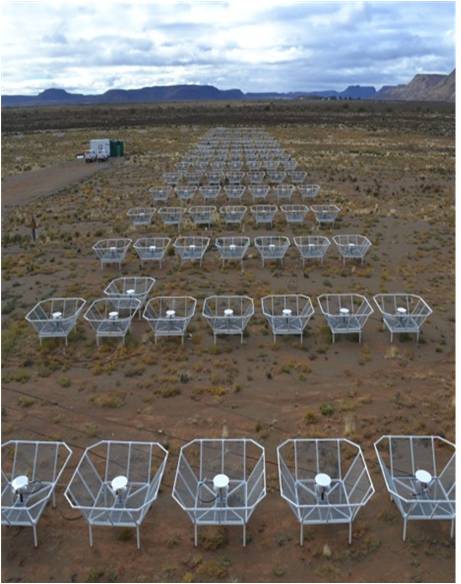
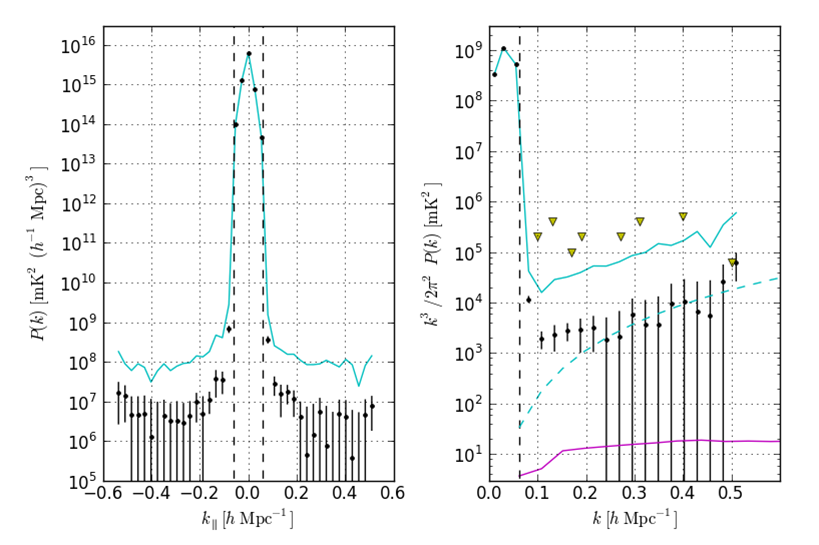
PAPER
The Precision Array to Probe the Epoch of Reionization is an array of 128 dipole elements operating between 120MHz and 180MHz, corresponding to HI redshifts between 11 and 7 (universal age between 0.4 Myr and 0.8Myr). The array is situated in the very low terrestrial interference environment of the SKA site in the Karoo region of South Africa. The array grid-design (Fig.1) exploits our new understanding of the chromatic response of an interferometer to perform an optimal statistical (power spectrum) search for the HI 21cm signal, while avoiding the strong radio continuum foreground emission that would otherwise overwhelm the cosmic HI signal. PAPER has currently set the best limits to the HI signal from reionization (Fig.2). PAPER has also produced unprecedented wide field images of the radio sky at 120MHz to 150MHz (Fig.3). In the next two years, we will obtain deep cosmological integrations with PAPER with the potential to make the first detection of the HI 21cm signal from cosmic reionization.
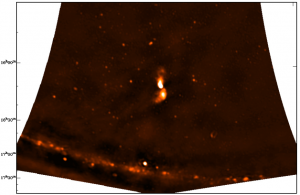
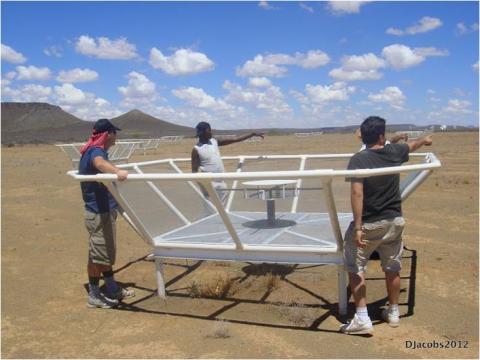
HERA
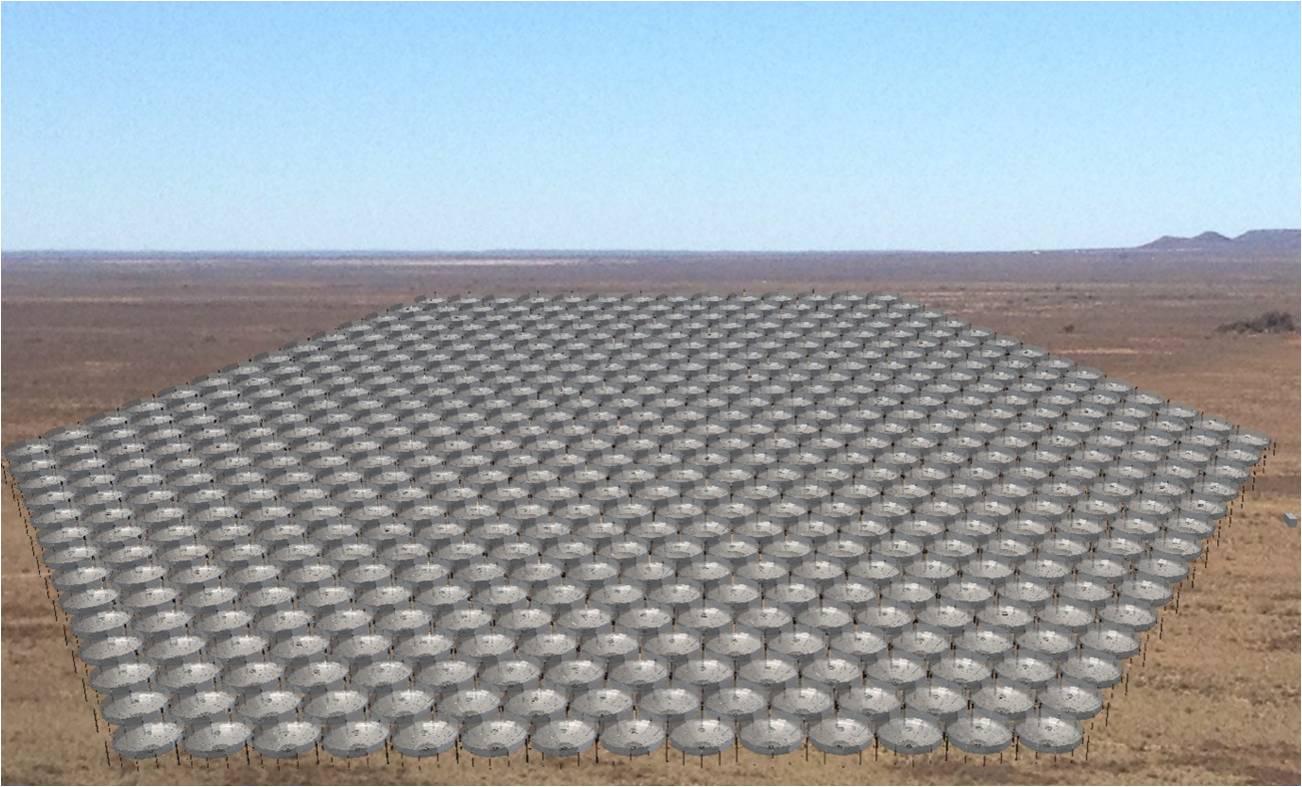
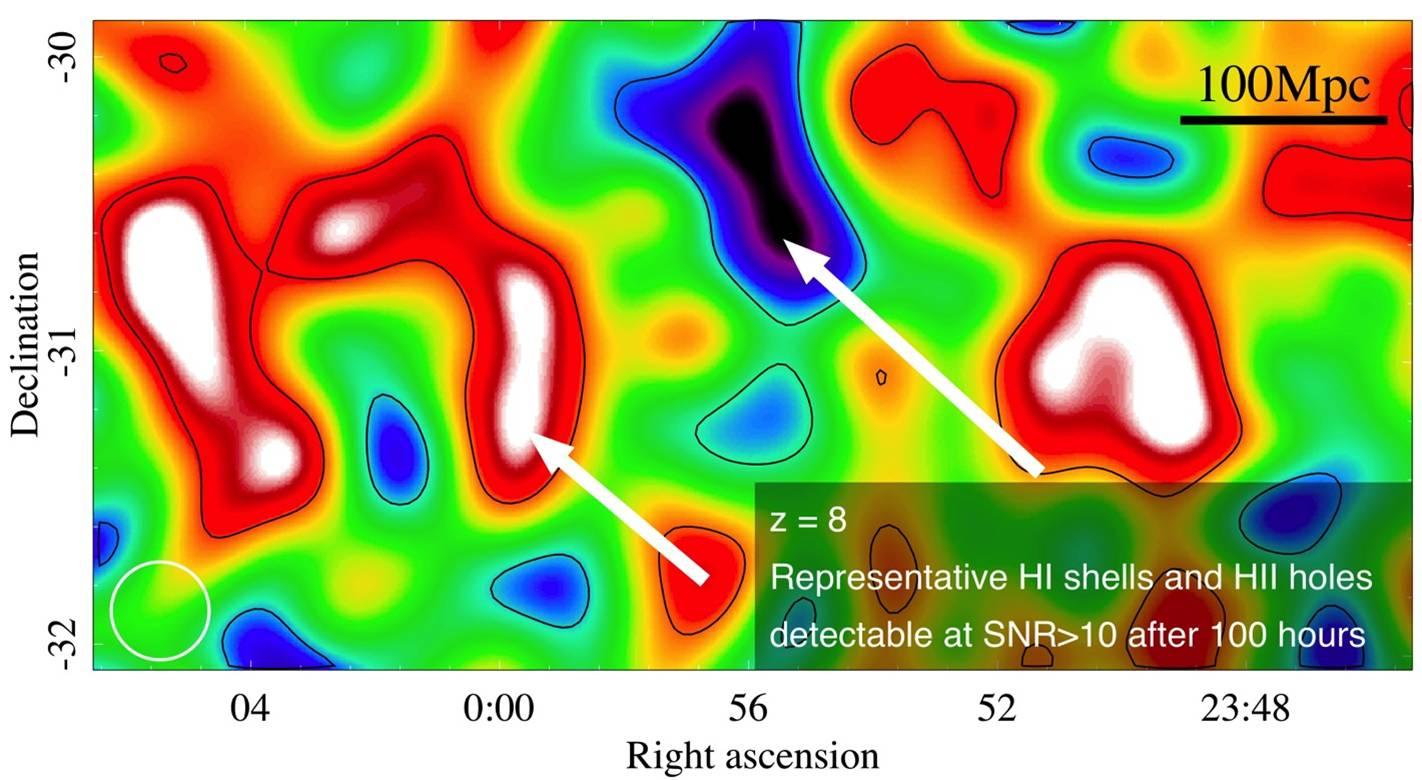
Cavendish Reionization Team
Prof. Chris Carilli: project lead at Cavendish
Irina Stefan: Imaging and calibration analysis
Dr. Nima Razavi-Ghods: Field engineering, deployment, testing
Dr. Jack Hickish: Digital design
Prof. Paul Alexander: oversight and science
Dr. Eloy de Lera Acedo: Array Antenna design, RF and EM modelling, Calibration
Lindley Lentati: Bayesian power spectral analysis
Peter Sims: 21cm and continuum sky simulations
Selected publications
- New Limits on 21cm EoR From PAPER-32 Consistent with an X-Ray Heated IGM at z=7.7, Parsons et al., 2014, arXiv:1304.4991
- What Next-generation 21 cm Power Spectrum Measurements can Teach us About the Epoch of Reionization, Pober et al. 2014, ApJ, 782, L66
- A Flux Scale for Southern Hemisphere 21 cm Epoch of Reionization Experiments, Jacobs et al. 2013, ApJ, 776, 108
- Opening the 21 cm Epoch of Reionization Window: Measurements of Foreground Isolation with PAPER, Pober et al. 2013, ApJ, 68, L36
- Imaging on PAPER: Centaurus A at 148 MHz, Stefan et al. 2013, MNRAS, 432, 1205
- A Per-baseline, Delay-spectrum Technique for Accessing the 21 cm Cosmic Reionization Signature, Parsons et al. 2012, ApJ, 756, 165
- Bright Source Subtraction Requirements for Redshifted 21 cm Measurements, Datta, Bowman, Carilli 2010, 724, 526

